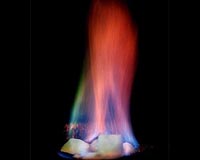| . |  |
. |
Paris (AFP) March 15, 2011 Experts monitoring weather patterns for any fallout from Japan's stricken nuclear plant said Tuesday the winds had so far been favourable but they were less confident about the outlook later this week. The World Meteorological Organisation (WMO) said winds on Saturday and Monday -- when two blasts occurred at Fukushima -- were blowing to the northeast and east, in other words out over the Pacific. "All the meteorological conditions are offshore, there are no implications inshore for Japan or other countries near Japan," said Maryam Golnaraghi, who heads the WMO's disaster risk reduction programme. But on Tuesday, the winds temporarily shifted, coming instead from the northeast, the Geneva-based WMO said, quoting the Japanese Meteorological Agency. For Wednesday, "the forecast is for northerly winds and later westerly, (for winds that are) near-surface and at 1,000 metres (3,250 feet)," it said. Thereafter, conditions "will fluctuate as weather systems develop and progress." In Tokyo, 250 kilometres (155 miles) southwest of Fukushima, the authorities said higher-than-normal radiation levels had been detected in the capital on Tuesday but not at harmful levels. The WMO activated a so-called environmental emergency response mechanism on Saturday, with three regional centres in Beijing, Tokyo and Obninsk, Russia, monitoring weather patterns. The benchmark for fallout from a nuclear disaster is the April 26, 1986, explosion at Chernobyl, which spewed radioactive dust across parts of Ukraine, Russia and Belarus and even reached as far as Ireland, more than 1,600 kilometres away. In the Russian Far East, the meteorological service at Vladivostok, less than 1,000 kilometres west of Fukushima, said radiation levels were within normal limits. The service's spokeswoman, Varvara Koridze, said that air samples "contained the usual background components. Radionuclides that would have been the result of an explosion were not found." Boris Lamash, head of the climate department at Far Eastern Federal University, said prevailing winds at this time of year in the region were westerlies and northwesterlies, which helped push harmful material away. In the United States, meteorologist Jeff Masters used a modelling program from the National Oceanic and Atmospheric Administration to determine where radioactivity would spread. "The great majority of these runs have taken plumes of radioactivity emitted from Japan's east coast eastwards over the Pacific, with the plumes staying over water for at least five days," he said. "It is highly unlikely that any radiation capable of causing harm to people will be left in the atmosphere after seven days and 2,000 miles-plus of travel," said Masters, founder of the Weather Underground online weather forecasting service. Cyril Honore, deputy head of forecasting at the French state weather service, Meteo France, was cautious. "Japan lies in temperate latitudes, so winds are generally west-to-east, but this prevailing direction does not rule out the possibility of very strong variations," he told AFP. He also noted that contaminated dust from Fukushima could disperse in wide patterns. "A cloud, or air mass, is not an enclosed bloc. It is exposed to horizontal and vertical turbulence, so matter is dispersed or diluted according to atmospheric directions," Honore said.
Share This Article With Planet Earth
Related Links The Air We Breathe at TerraDaily.com
 Measuring Methane
Measuring MethaneMadison WI (SPX) Mar 04, 2011 Methane is an extremely potent greenhouse gas. Wetlands, gas hydrates, permafrost, termites, oceans, freshwater bodies, non-wetland soils, are all natural sources of atmospheric methane; however, the majority of methane presence ca n be accredited to human-related activities. These activities include: such as fossil fuel production, biomass burning, waste management and animal husbandry. T ... read more |
|
| The content herein, unless otherwise known to be public domain, are Copyright 1995-2010 - SpaceDaily. AFP and UPI Wire Stories are copyright Agence France-Presse and United Press International. ESA Portal Reports are copyright European Space Agency. All NASA sourced material is public domain. Additional copyrights may apply in whole or part to other bona fide parties. Advertising does not imply endorsement,agreement or approval of any opinions, statements or information provided by SpaceDaily on any Web page published or hosted by SpaceDaily. Privacy Statement |